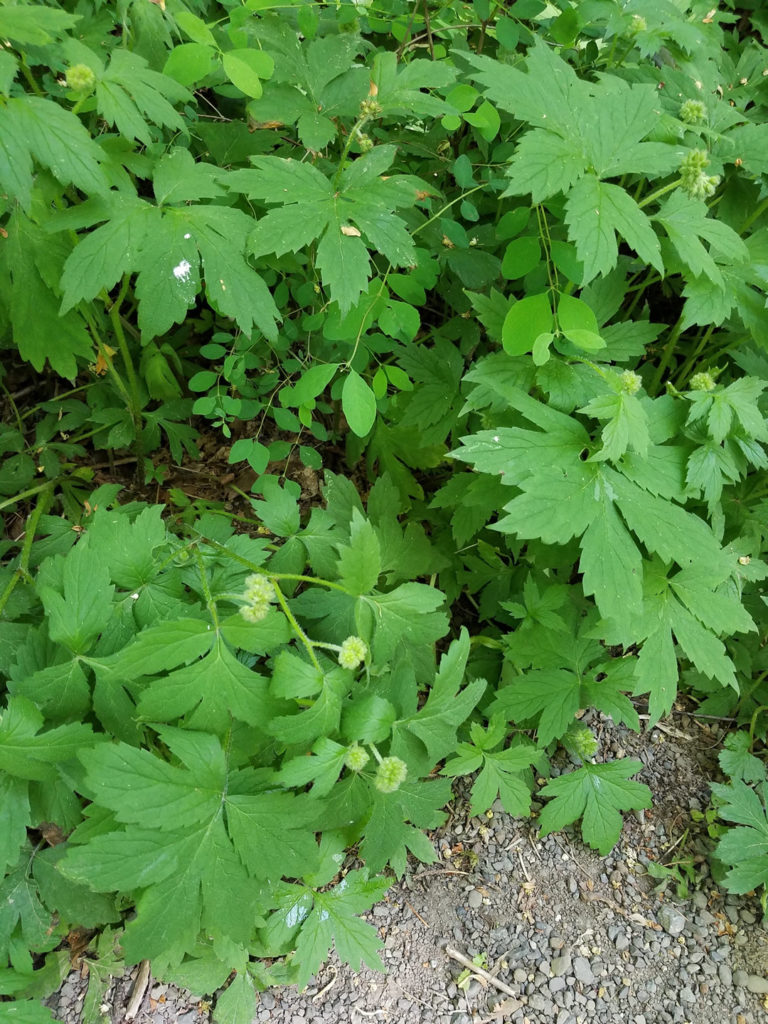

Pacific Waterleaf, Hydrophyllum tenuipes
Hydrophyllaceae – Waterleaf family
The generic name is the Latin version of “water” (“hydro”) and “leaf” (“phylum”), and may refer to the moist conditions required by some species or to the wetness of the stems when broken. The specific name in Latin means “thin” (“tenuis”) and “foot” (“pes”), perhaps referring to the tall and erect growth of Pacific waterleaf compared to other species in this genus.
The sharply divided palmate leaves arise from rhizomes in spring. In favorable moist woodland areas, waterleaf can grow up to three feet high and may blanket the forest floor. The stems, foliage, and sepals have thin, protective bristles. The flowers occur in clusters and have whitish petals. The stamens of this genus extend noticeably beyond the petals and give the flower heads a bristly appearance. By summer’s drought, the light green luxuriant blanket of waterleaf foliage has withered away, only to reappear the following spring. At least one Native group used the root for food. Woods nemophila (Nemophila parviflora) is a diminutive member of the waterleaf family, an annual herb with small whitish flowers and creeping stems, inconspicuous on the forest floor (5-81).
Information courtesy of “The View From Springbrook Park; an Illustrated Natural History” by Ed Chinn.
Photos taken by Laura Tanz
Sponsored by Friends of Springbrook Park; Lake Oswego, OR